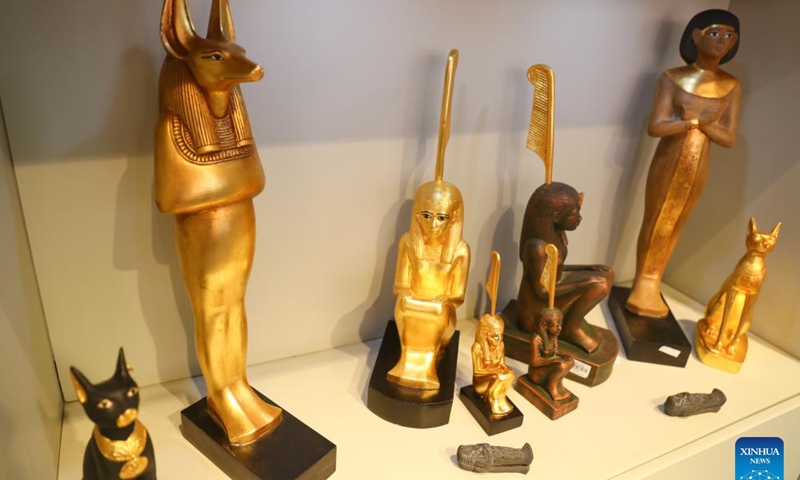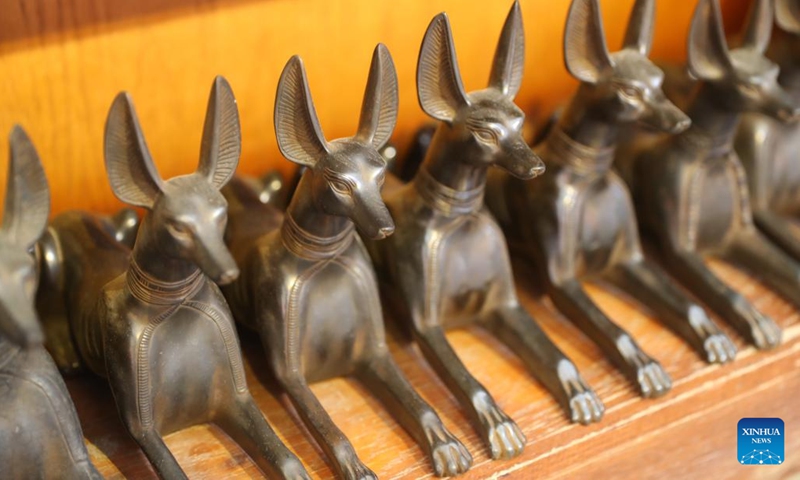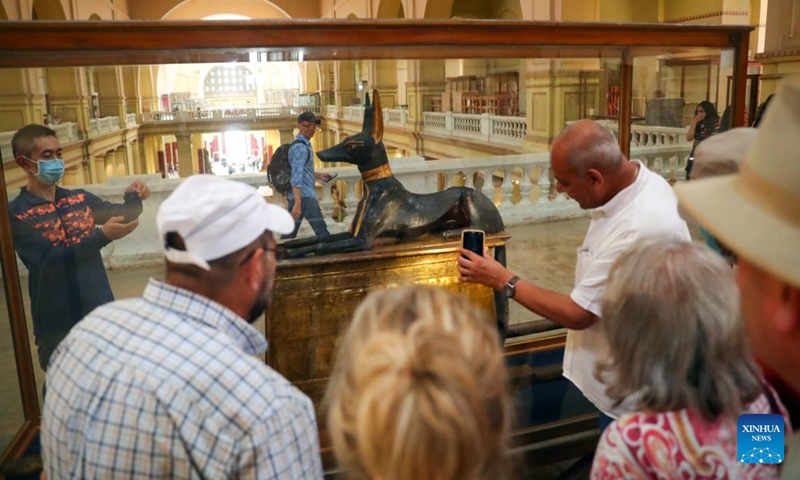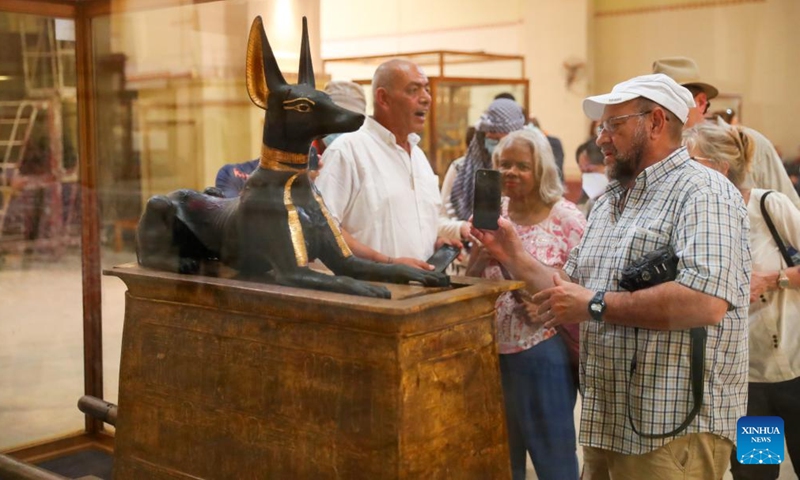
Photo taken on May 14, 2022 shows the replica of the statue of god Anubis at the souvenir store of Egyptian Museum in Cairo, Egypt. As a funerary deity, Anubis is associated with mummification, funerary rituals, and the cemetery in ancient Egyptian myth, usually depicted as a black canine, or a man with canine head. It can be found at large numbers of pharaonic antiquities at the world-known Egyptian Museum. (Xinhua/Sui Xiankai)

Photo taken on May 14, 2022 shows the replica of the statue of god Anubis at the souvenir store of Egyptian Museum in Cairo, Egypt. As a funerary deity, Anubis is associated with mummification, funerary rituals, and the cemetery in ancient Egyptian myth, usually depicted as a black canine, or a man with canine head. It can be found at large numbers of pharaonic antiquities at the world-known Egyptian Museum. (Xinhua/Sui Xiankai)

Tourists view the statue of god Anubis discovered at the tomb of king Tutankhamun, at the Egyptian Museum in Cairo, Egypt, on May 14, 2022. As a funerary deity, Anubis is associated with mummification, funerary rituals, and the cemetery in ancient Egyptian myth, usually depicted as a black canine, or a man with canine head. It can be found at large numbers of pharaonic antiquities at the world-known Egyptian Museum. (Xinhua/Sui Xiankai)

Tourists view the statue of god Anubis discovered at the tomb of king Tutankhamun, at the Egyptian Museum in Cairo, Egypt, on May 14, 2022. As a funerary deity, Anubis is associated with mummification, funerary rituals, and the cemetery in ancient Egyptian myth, usually depicted as a black canine, or a man with canine head. It can be found at large numbers of pharaonic antiquities at the world-known Egyptian Museum. (Xinhua/Sui Xiankai)
